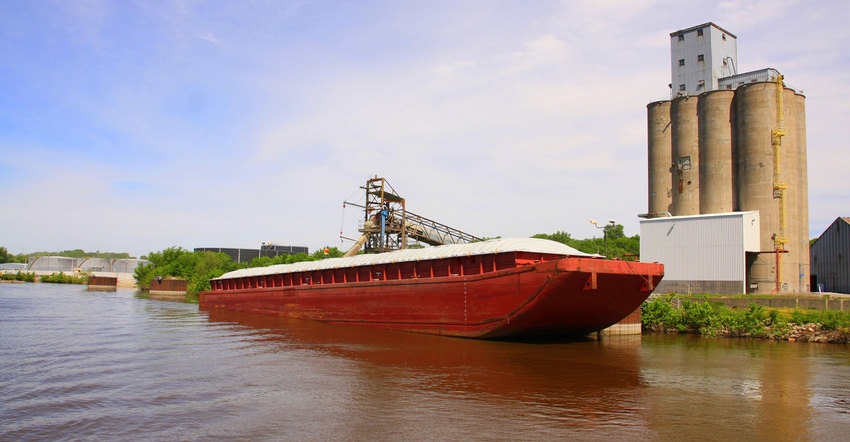June 28, 2021

One of Missouri agriculture’s unsung heroes is our river system. The best way to document the potential and opportunity the rivers bring is to look to a well-known river resident, Mark Twain. He wrote, “Along the Upper Mississippi, every hour brings something new. There are crowds of odd islands, bluffs, prairies, hills, woods and villages …”
As Missouri farmers and ranchers, we are blessed with this advantage, in addition to our rail and trucking options to get our products to market. The three transportation options working together create a competitive environment that brings down the cost of grain transportation overall.
It’s taken time to get where we are today. Dams were since built into the river system to provide electricity and management options for protection of agricultural land. Since the 1990s, we’ve seen a renaissance on both the Missouri and Mississippi rivers in terms of management.
Rivers transport farm goods
The Missouri River is the longest river in North America. Before entering the Mississippi River in St. Louis, the Missouri River runs for about 2,400 miles and passes through 10 states. On its own, the Mississippi River is the nation’s second-longest river at more than 2,300 miles, and also pushes agricultural goods through 10 states.
Although it isn’t the longest river, the Mississippi does carry more water than any other American river and deposits into the critical Gulf of Mexico. Together, the Missouri and Mississippi rivers combine to form the world’s fourth-longest river.
We see a tremendous amount of fertilizer work its way up the river systems for delivery into Missouri during planting season. On their return trip, our barges are usually loaded down with grain for export to customers around the world. And our small towns thrive when the river system thrives.
It takes a lot of work to maintain these systems appropriately. We’ve seen leaders — such as Gov. Mike Parson — step up to prioritize navigation and flood control along our river systems that have paid off for agriculture.
We saw a major flood challenge in 2019, and today, our river levees are mostly recovered because of Missouri’s work with neighboring states, the Army Corps of Engineers, the U.S. Fish & Wildlife Services and, of course, our farmers and landowners.
Barge traffic has been silently increasing over the years because of our collective efforts.
More barges on rivers
Missouri’s Grain Inspection Services samples, inspects and grades grain and various commodities throughout the state of Missouri. As an “Official Service Provider,” our Missouri GIS inspectors are federally licensed to grade corn, soybeans, wheat, sorghum, oats, rice, lentils and edible beans.
Many times, this team is the final inspection point for grain leaving the elevator, destined for domestic and export shipments. The team maintains offices in St. Joseph, Marshall and New Madrid, and it’s an important economic driver for our rural communities.
We went back as far as our digitized grain inspection data goes to show the true difference. Since 2008, New Madrid’s service point saw nearly 12,500 barges inspected, and Marshall’s service point (which includes Missouri and Mississippi River locations) saw more than 8,500 barges come through for inspection.
The most impressive numbers are found in the increases in five-year averages starting at the beginning of our datasets. Marshall’s five-year average increased from 373 barges annually from 2008 to 2012, to 953 annually from 2016 to 2020, showing a 255% bump in activity.
Farther south, New Madrid’s five-year average went from 759 annually from 2008 to 2012, to well over 1,000 annually from 2016 to 2020. That’s a 31% increase at one of the most critical river shipping ports in our state.
Missouri is within 600 miles of 51% of all U.S. households and America’s fastest-growing metro areas. We rank sixth in soybean production at 290 million bushels and ninth in corn production at 560 million bushels, so our producers need a strong infrastructure system. Due in large part to agriculture, our state ships about 40 million tons of commodities via 17 barge ports annually.
It is important to point out that river transportation is not only vital to our state’s economy, but also makes our highway system safer by reducing the number of trucks competing for space on our crowded highways. Each barge can carry the equivalent of 60 semitrucks. We are proud of the investments made by the state of Missouri into port developments, navigation improvements and overall infrastructure.
Chinn is the director of the Missouri Department of Agriculture and a hog producer from Clarence, Mo.
About the Author(s)
You May Also Like




